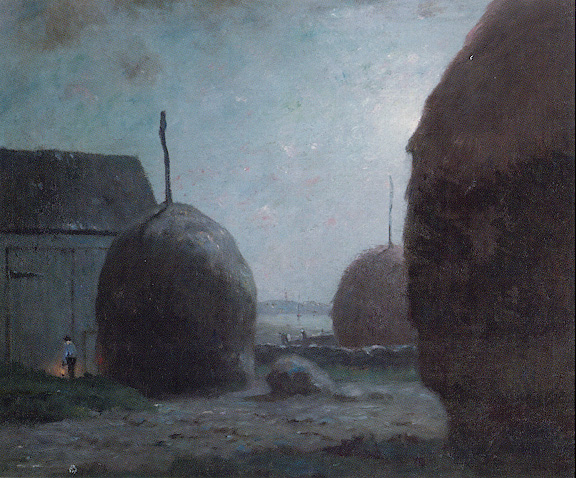Have you thought at times that technology, in spite of its usefulness, has also encroached upon your peace of mind, your serenity, your need for inspiration from sources other than television and the internet? If so, you probably shared the feelings of Americans who more than a century ago became weary of the many new inventions that were intended to make life better as the industrial revolution evolved.
These were not old fogies who couldn’t deal with inevitable change, for they welcomed progress, but they were also romanticists unwilling to trade nature for technological advancement. Art historians have referred to them as Tonalists.
These thinkers included poets, writers, photographers and painters, artists who mindfully clung to the traditional aesthetic goals of beauty and sublimity as they were known in America. They were moved by the quietude of nature, its gauzy, veiled mysteries and metaphysical transcendence, as they contemplated its existence. For them the natural world provided more inspiration than the geometry of a man-made building in Chicago or a crowded square in New York City. Theirs were private and intuitive responses to unmolested views of rural America. Moreover, theirs were frequently bucolic views quite different from the grandiose panoramas of mountains, valleys and rivers that had been celebrated in the academically objective paintings of their Hudson River School brethren of only a generation or two earlier.
The Tonalists were a slightly younger batch of painters who sought the “color of mood,” as Wanda Corn has discussed them in her book on the topic. These artists were not standing back to view a great vista of the Hudson River or a great Western or South American scene. Instead they were in close to their subjects, seeking a personal connection with smaller glimpses of nature: pools hidden by a wispy grove of trees, a farm nestled in a misty valley, a snow-covered lane leading somewhere. They were fascinated by softly defined forms barely seen through a fog or the warm leaves covering the ground. These rustic scenes were comfortable, at times suggestive, mysterious, even vague. Tonalists or “American Barbizon” painters sought intimate views; they were artists who immersed themselves into the secret places of America’s nature to record its gentle moods subjectively.
Dwight Tryon - "Newbury Haystacks in Moonlight"
To conclude, Robert R. Preato studied the great patrons of Tonalism: Freer, Hearn, Clarke and Evans, and concluded that Tonalist landscapes provided a restful break from the stressful world of business and finance. These philanthropists realized the essential American quality of this special type of landscape and most of them saw a potential for educating people about our talented home-grown painters and for promoting American art over European. Indeed, by the era of the Tonalists, “American painting could stand in dignity with that of the European schools.” Tonalism was much more than a Yankee Barbizon School: in a sense it rivaled American impressionism by appearing as a more spiritual alternative to the objective, unidealizing “technicians” known as impressionists.

